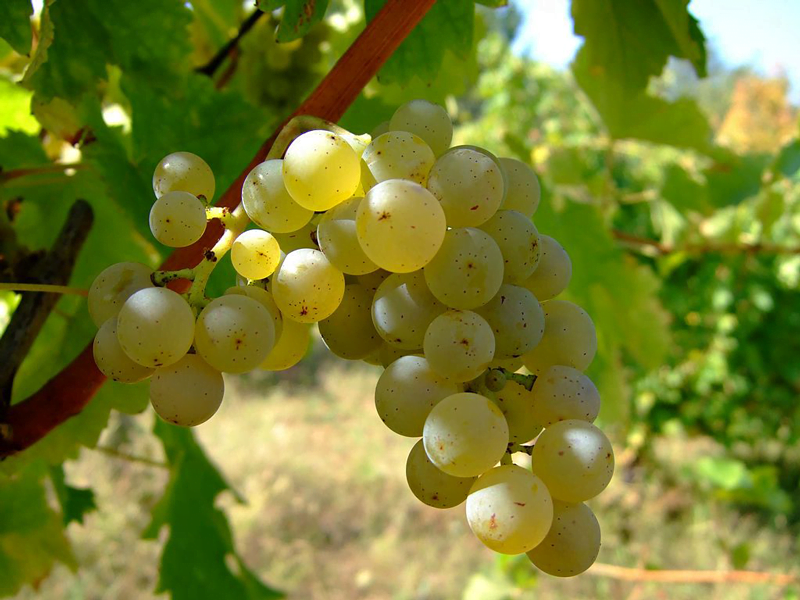Origins
Sauvignon is a white grape variety, most likely native to the French region of Bordeaux. Its name derives from the French term “sauvage”, indicating a connection with the wild Vitis Labrusca.
Sauvignon Blanc is considered an aromatic grape variety.
The strength of its aromas is due to the synthesis of pyrazines and methoxypyrazines, aromatic organic components, naturally present in the grapes during their development.
These substances, properly treated and enhanced, give life to wines with a vivid and pleasant aromatic imprint. Precisely for these components, we can speak of aromatic red and white wines.
Diffusion
Originally spread in France, today Sauvignon Blanc is the king of some important denominations worldwide:
- In the Loire Valley, it is the protagonist of the great white wines of Sancerre and Pouilly-Fumé.
- In the Bordeaux region, together with Sémillon and Muscadelle, it gives life to the most famous of the botrytized wine: Sauternes.
Not just France, though! Sauvignon Blanc grape variety is now cultivated almost all over the world. Successful white wines, based on Sauvignon Blanc, are produced in New Zealand, in the Marlborough region, in Italy, in the Friuli Venezia Giulia region, in California, in Australia and in Chile.
Cultivation Needs
Sauvignon Blanc is a demanding grape variety: it needs suitable soils and climates, to give the best with its fruits
The best areas for its cultivation have a cool and breezy climate, vineyards in a hilly position, marked by a deep, well-draining, shallow and gravelly soils, safe from water stagnation.
Sauvignon Blanc Wines: Characteristics
Wines made from Sauvignon Blanc grapes have intense aromas, mainly fruity, floral and grassy, with sensations of exotic fruits, citrus, aromatic herbs, mown grass, tomato leaf and green pepper. Based on aging, especially if in wooden barrels, they can also develop spicy nuances, reminiscent of ginger, vanilla, saffron.
Full-flavored and pretty low in alcohol, the typical freshness of its taste is favored by fermentation in stainless steel, carried out at low temperature.
Sauvignon Blanc Wines: Food pairings
Sauvignon Blanc gives wines that are very versatile. In fact, they can successfully accompany the taste of vegetarian dishes, based on eggs, fresh goat cheeses, and fragrant vegetables, such as asparagus, mushrooms, pumpkin, tomatoes and aubergines.
Perfect wines also in combination with seafood recipes, based on fish, crustaceans and molluscs, accompanied by vegetables and even fresh fruit.
Often, Sauvignon Blanc wines are a perfect choice for aromatic, spicy, fusion and asian-style recipes, as the follows:
- Sushi
- Samosa
- Spring rolls
- Sweet and sour shrimps
- Pad thai
- Ginger tuna tartare






